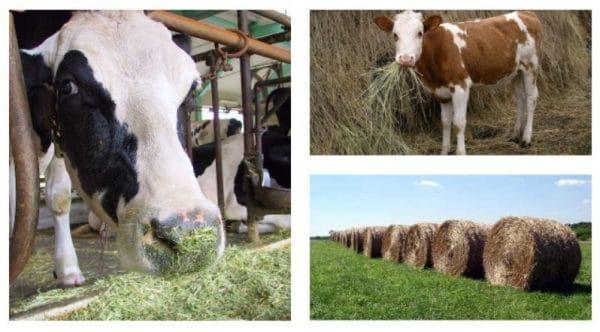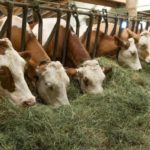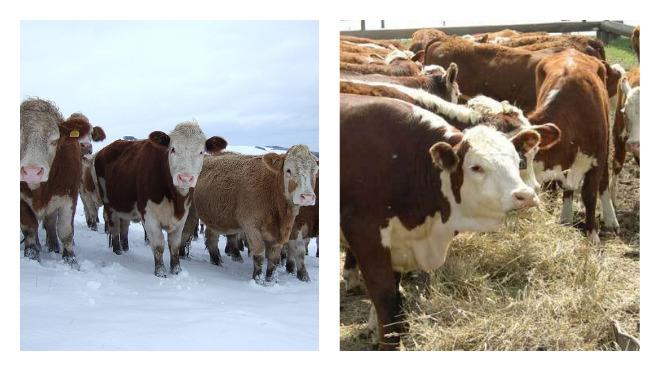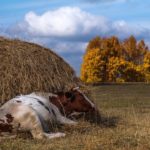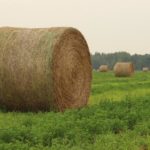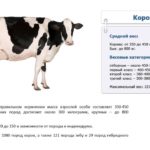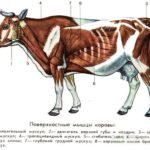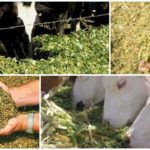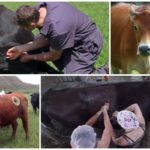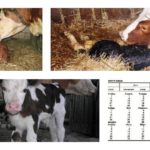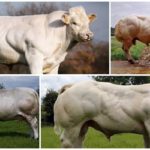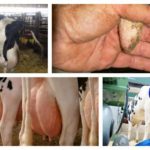Cattle productivity depends on the amount of feed consumed. The norms and types of products are different for each season. In summer, animals mainly feed on fresh vegetation. But in the cold season, the diet is revised. Farmers must ensure an adequate supply of food. Therefore, it is important to correctly calculate how much hay a cow needs for the winter.
Calculation of daily hay consumption
The average figure that is used when preparing hay is about 3 kilograms per 1 quintal of a cow’s weight. Not every farm, especially a small one, has the opportunity to determine the weight of an animal. Zootechnical formulas are used for calculations.
Trukhanovsky's formula
To calculate how many tons a livestock weighs, the owner needs to determine 2 indicators. Using a meter tape, measure the circumference of the animal's chest (A). To find out the length of the body (B), one end of a straight stick is applied to the shoulder, the other to the pelvic bone. The cow or bull is fixed in such a way that the legs are vertical and the head is at the level of the back.
The obtained data is inserted into the formula:
| For dairy direction | For meat direction |
| A*B/100* 2 | A*B/100* 2.5 |
The most accurate results are shown by measurements in the morning, even before the first session of feeding the animals.
Calculation by regression equations
For the second method, it is enough to determine only one indicator - A. The mass, depending on the width of the sternum, is determined by the formula:
| Girth, cm | Weight |
| Up to 180 | 5.3*A - 507 |
| From 180 to 190 | 5.3*A - 486 |
| Over 190 | 5.3*A - 465 |
Methods for determining the body weight of an animal give an error of approximately 20 kilograms. This must be taken into account when determining the amount of hay that a cow eats.
Hay consumption per head of cattle
Various factors influence the amount of feed:
- The more milk a cow gives, the more food she should receive.
- Depending on weight, the diet varies within 10%.
The amount of dry food depends on the season. Vegetables, fresh herbs or concentrates are added to food at different times. Accordingly, the hay rate changes.
For a day
Knowing the weight of the animal, it is easy to determine that a cow weighing 5 centners eats up to 20 kilograms of hay per day. During lactation, the main emphasis is on succulent food, and the share of dry food is reduced to a quarter of the total amount of food. During the period when milk production ceases, hay consumption doubles. Young animals and heifers eat from 8 to 12 kilograms of harvested grass per day. The meat sector of cattle receives up to 30 kilograms. The share of dry food in the diet of bulls varies from 10 to 15 kilograms per day per individual.
Newborn calves first try such food at 3 months of age. The initial daily intake of young animals does not exceed 4 kilograms. Gradually the figure is increased to 10 kilograms.
For the winter
The amount of hay that needs to be prepared for cold weather depends on the region. In the south of the country cattle has the opportunity to feast on fresh grass longer than the northern livestock. Dry grass in warm areas is not stored as much as in areas where frosts last for a long time.
Farmers are advised to harvest more hay than calculated. The late start of spring and spoilage of some feed lead to greater food consumption. It is almost impossible to make up for losses at the end of the season. Therefore, not 3, but 4 tons of hay per animal are stored for the winter.
For a year
Hay is the main food product for animals. In summer, less dry food is required than in winter. The livestock has access to juicy and tasty grass on pastures.For a cow that produces up to 3 tons of milk per year, the share of hay in the diet is 12%. Taking all factors into account, cattle require at least 3.5 tons of dry grass for 365 days. For meat breeds, the norm is increased almost 2 times and brought to 6 tons.
It is convenient to store cut vegetation in bales of 35 kilograms. Then there are 100 bales of hay per dairy cow and 150 bales of hay per beef cow.
The weight of the grass rolls depends on the size of this storage unit. A standard package holds up to 240 kilograms of dry food. For 1 animal, 15 or 25 rolls are prepared.
Frequency of feeding the cow hay
Feeding schedules for ruminants are of great importance. It is recommended to feed cows at least 3 times a day. Violation of the regime affects the condition of the digestive tract and affects the volume of milk production.
The following routine is considered generally accepted in animal husbandry:
- The first feeding is carried out at 6 am.
- Daytime – at 13:00.
- The final one is at 8 pm.
The bulk of the daily requirement is given to the livestock in the evening. This distribution is associated with the characteristics of the cattle digestive system. Easy-to-digest foods that enter the body in the morning and at lunchtime promote the production of gastric juice. It is also important that the hay takes a long time to digest. Therefore, the cow will not feel hungry all night.
Grass suitable for hay making
Different plant varieties are suitable for making hay. Traditional types of dry food:
- Clover, peas or alfalfa form the basis of the legume variety. High protein content promotes rapid weight gain. But the amount of such food should not be excessive, so as not to provoke digestive problems.
- Cereals are less nutritious, but storing sweet clover or wheatgrass is much easier.
- The most versatile is considered to be hay collected from different grasses. Clover and alfalfa go well with timothy, and oats go well with vetch. Such plants have all the advantages of other types of dry food.
Cut plants are often left to dry in open areas exposed to sunlight and wind. This method does not require additional costs. Correct calculations will help you create a balanced diet for feeding livestock. Cows must receive sufficient food throughout the year. The immunity and productivity of the livestock depend on this.

